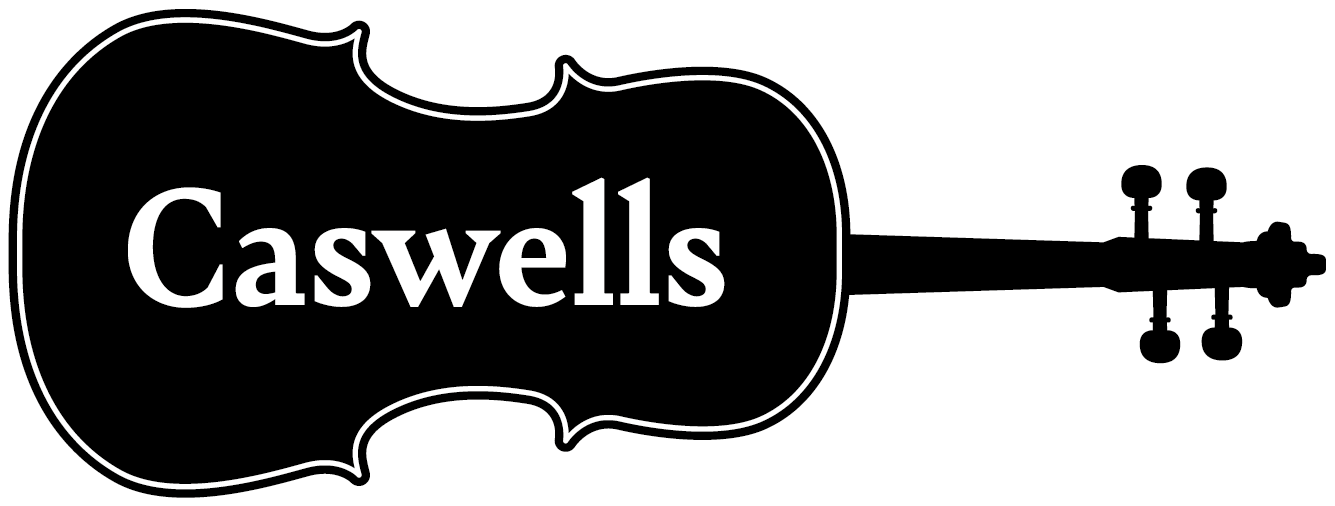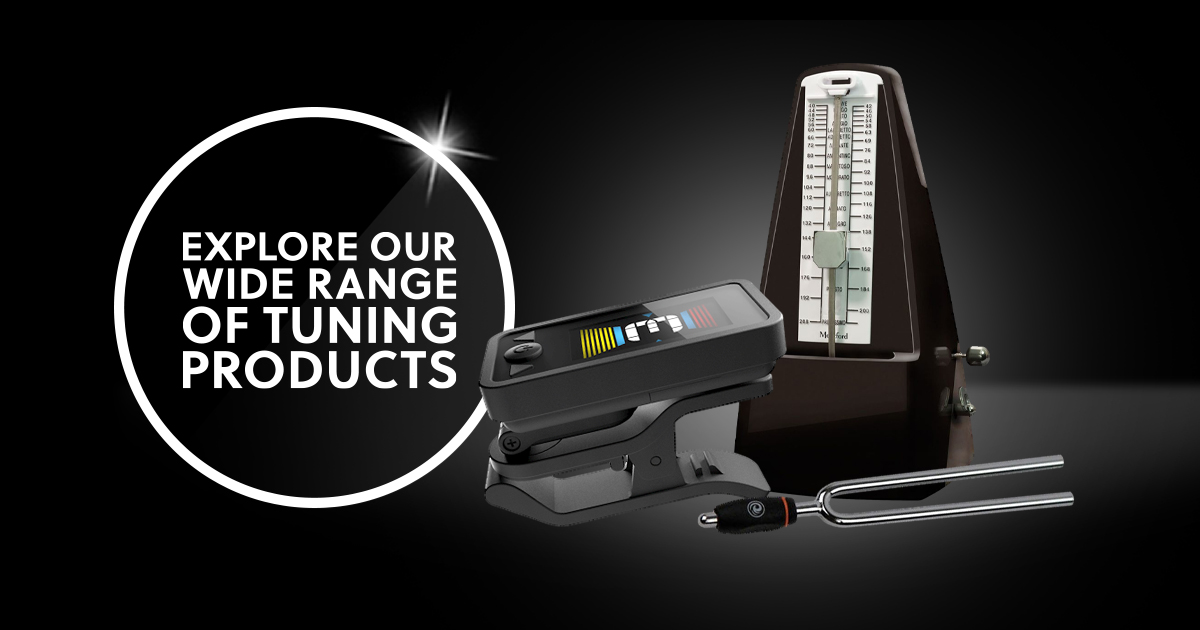Tuning your instrument is key to progress
When learning to play any string instrument, knowing how to tune it is a critical initial step and should be focused on in the early stages. Initially, your teacher will ensure instruments are correctly tuned, but beginner musicians should learn how to tune their instrument independently sooner rather than later.
To be able to tune your cello — and the process is a tricky one — beginners will need the appropriate equipment and knowledge to succeed.
Don’t limit your potential by always relying on your teacher, because the ability to tune your cello independently will allow you to practice in your own time and progress faster. Read on to discover all you need to know about cello tuning.
How to Tune a Cello
The cello has four strings which are tuned in perfect fifths. The notes are: C, G, D, and A and ascend in order of pitch—with C being the lowest note and A the highest.
Cellos are tuned by turning the pegs that the strings are wrapped around. By tightening the strings a musician raises the pitch and by loosening the strings the pitch is lowered.
The four tuning pegs are located on the pegbox and the four fine tuners (if fitted) at the tailpiece are used to tighten and loosen the corresponding strings. Do remember that the tension of the strings over the bridge secures the bridge in place and keeps the soundpost upright. As a result, be careful when slackening off the strings all at once, thus releasing this tension.
For beginners who still need to progress toward full competence of spot-on intonation, there are plenty of devices that can be used to help tune your cello. Such as:
- Other Instruments (particularly the piano)

What Are Cello Tuning Sequences?
Dependent on how many strings need to be tuned, you can adjust your approach. Small adjustments can be made using only the fine tuners but if the strings have been left to go quite far out of pitch then you’ll need to use the pegs.
If more than two strings need to be tightened, use the following tuning sequence: C, G, D, A.
- Begin with the open C string and gradually tighten it until it’s close to the correct pitch.
- Start by initially plucking the string to generate a tone, gently turning and exerting an inward pressure to tighten it.
- A digital tuner can make this process easier as you observe the note changing as you are turning. These tuners indicate whether you are flat or sharp or on pitch
- Don’t be dismayed if you are not on perfectly pitch straight away as each string is impacted by the tuning of another so there will be multiple adjustments.
- Continue to do this with each string.
- After all the strings are on pitch as best you can check your bridge alignment to check that the forward pressure hasn’t made it lean. It should be at a 90º angle to the belly.
- Do the final tuning on each string using the fine tuners to achieve the final adjustment.
Must-Have Cello Tuning Equipment
Tuners are essential cello accessories for beginners, ensuring you are on pitch at all times.
Innovative designs such as the Korg Humidi-Beat can be used as a metronome but also measures the temperature and humidity inside the cello case. This can affect the tuning.
Choosing the correct digital tuner is a much simpler way to help beginners start to develop their audio skills and responses to the cello.
The Korg CA40 chromatic tuner features a refined design with a stand on the back that lets you place the tuner on any surface. It is a larger and more easily readable version of previous high-precision LCD needle style meters. Its Sound Out function lets your product a reference tone from the internal speaker and the tuner will remember the pitch you select for future use — 85 hours of continuous use if you so wish.
The clip-on model of digital tuner presents its own advantage. Tuners such as the Intelli IMT500 clip-on chromatic tuner can pick up the vibrations of the strings for high precision tuning in a noisy environment. This style of tuning is very user-friendly with visual assistance in a clear manner. Beginners will be able to link sound with sight which helps develop your ear training
For beginners who are new to cello, a pitchpipe can be a suitable option that again trains the ear for comparative tuning. Pitch pipes offer each required note by physically blowing into the device
Most advancing Cellists often use a simple tuning fork, which gives an accurate A note – and the other strings are then tuned by ear. This is not recommended for beginners
Use a piano to tune your Cello (given that the piano is on pitch!) again moving up from C to G, D, and A. Finally, use the fine tuners to complete the job
Tuning Pegs Maintenance
Maintaining the smooth turning tuning pegs is imperative to getting the most out of your playing experience.
Student instruments can be frustrating due to being over tight or with slipping pegs. Make sure that the pegs have been properly fitted by the supplier—many offer a free service after a year to check this feature
An accessory such as The Pegmate can make tuning your cello even simpler leading to smoother turning and tuning. If required simply loosen each peg in turn and apply a thin coating to the surface. Re-tension and move on to the next peg. If you are not too far away from the Cello shop, get them to do it for you!
Broken Strings
Should you overtighten the strings in error this can lead to breaking, usually at the pegbox end. Strings do not break due to faulty manufacture, so the only remedy is to buy a new one and replace the string.
Caswell’s assortment of cello strings can have you playing again in no time at all. Do remember to state the string type ( if you have upgraded strings) and also the size of the Cello (¾ or ½ etc).

More Cello Tuning Tips
- Never remove or slacken (for whatever reason) all the strings of your cello at the same time but rather keep only one string removed at a time. This is because the bridge and soundpost can fall if there is not sufficient string tension on the instrument. If this occurs, you will have to have it corrected by a professional. A costly occurrence can be avoided easily.
- At higher temperatures, the strings often go flat. In lower temperatures, the strings can go sharp – keep this in mind when tuning.
- Fine-tune your cello regularly each time you play.
- Experiment with different tuners and find out which one is best for you.
- Never tighten your fine tuners all the way down—some designs can dent or scratch the belly. If in this situation, screw the fine tuners right back, tune-up using the pegs and then re-tension the adjuster.
- Keep your strings clean and shiny using a string cleaner. Impacted rosin can in time lead to loss of tone.
At Caswell’s, we know how important it is to support people at every step of their instrumental and musical journey. That’s why we’re so passionate about making sure beginners have everything they need to succeed with their cello and make it a part of them for life.
Provide your student, child or even yourself the best chance to succeed on the cello by combining your cello with quality tuning products. Ensure your instruments sounds as it should every time it’s bowed with flawless intonation.
Give yourself an even better opportunity to excel by finding an experienced teacher that can guide you through the learning process and beyond. Caswell’s unique Find a Teacher tool can help beginners to find a teacher near them. You can view their accreditations, experience and charges all in one place to help you make the right decision.
Feel free to call into our store in Banbury, where our friendly and experienced staff can help advise you on what’s best for you based on your budget, playing style and ability whether it’s a beginners cello, a new cello case, a metronome or a tuning device you are after.
If you’re not able to pop in, don’t hesitate to get in touch with us on +44 (0) 1280 707 140 or browse the website https://caswells-strings.co.uk/
This article was checked by the director of Caswell’s Strings, Lance Tunley who is an experienced purveyor of stringed instruments and accessories with over 30 years of experience in the field.






I cannot find any mention of the need to apply inward pressure as you turn the peg. This is absolutely essential. As a cello teacher constantly dealing with pupils’ slipping pegs I have built up impressive arm and hand strength ramming in pegs over the years.
Thank you for the comment on our cello tuning article Alison.
You are absolutely correct that even on well fitting pegs, a firm inward pressure is often required
We will correct the article and add the comment, thank you